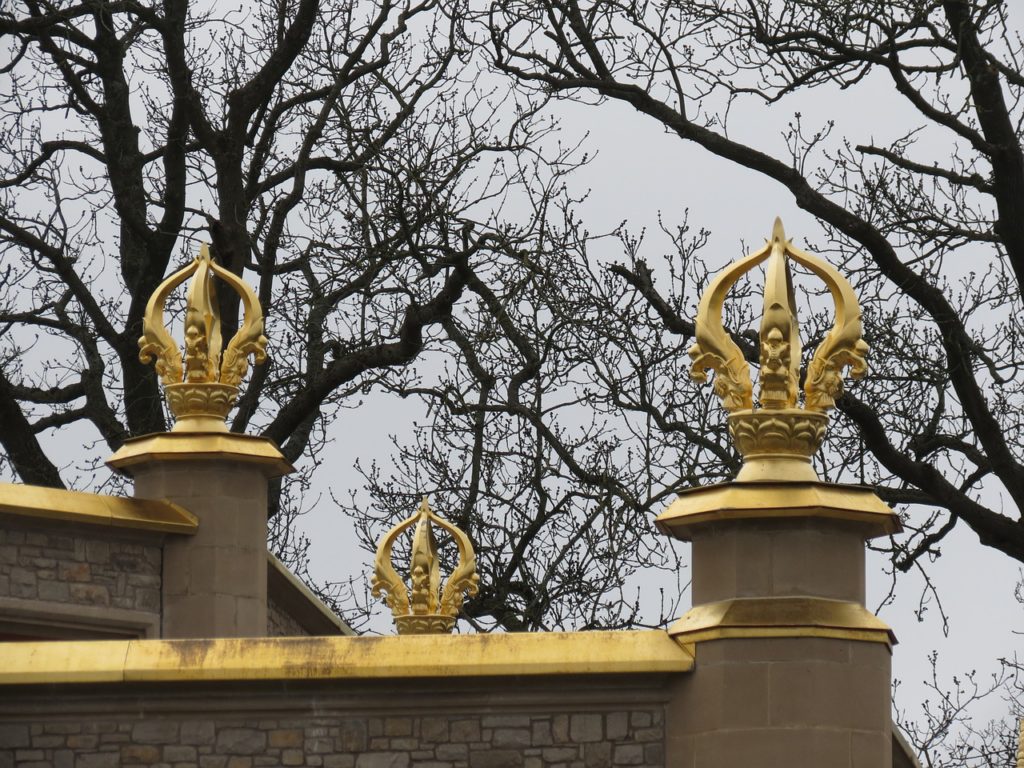How to Transmit Genuine Dharma in the West

When a Himalayan lama moves to the West, and begins to gain followers, he or she is faced with many decisions about how to do things in a different society from which they were raised and trained.
Today, I’ve been contemplating the various ways I’ve seen Tibetan and Bhutanese lamas who live in Western countries structure things at their centers. I’m not posting this to make a political statement. Quite the opposite, I am posting this out of respect for the burden that lamas in positions of authority carry in ensuring Dharma in the West does not lose its authenticity or it’s power to transform the minds of disciples, now and in future generations.
Decisions needed
Practice in general:
- Unelaborate, essentialized, practices are best for western students vs.
- Long sadhanas and elaborate ceremonies and drupchens at a center are best for western students.
Recitations:
- Practice sadhana in Western languages vs.
- Practice in Tibetan only
Ritual and Art:
- Teach ritual art to Western students vs.
- Abandon or minimize ritual
Leadership:
- Empower westerners as leaders and teachers vs.
- Import leadership from Asia
The Practice Foundation:
- Require the ngondro (foundational) of the tradition of new students vs.
- Focus on other practices for new students
Regard for Great Masters:
- A great master’s conduct should not be criticized or subject to local laws and customs. vs.
- Great masters should adapt their conduct to match the society in which they are teaching.
Technical Dharma Language:
- Using Sanskrit terms is better vs.
- Using Tibetan equivalent terms is better
Monasticism:
- Encourage monasticism for western disciples vs.
- Discourage monasticism
Scholasticism:
- Encourage and teach the main scholastic doctrinal texts of the tradition vs.
- Focus on encouraging practice
Translation:
- Pay oral translators vs.
- Rely on volunteer translators
Three-year Retreat:
- Encourage three-year retreat for western disciples vs.
- Encourage integrating practice and working life. vs.
- Adapt three-year retreat program to be accomplished over a longer period of time in working life.
Vajrayana:
- Require students have a thorough grounding in Mahayana Buddhism before receiving empowerment vs.
- Open empowerments for all. Start with Vajrayana practice or ngondro.
Ceremonies:
- Delegate enactment of ceremonies to competent Westerners vs.
- Always have Himalayan lamas leading ceremonies.
Spiritual leadership:
- Carry on patrilineal Himalayan family transmission of Dharma lineage authority vs.
- Empower the daughters of Himalayan Rinpoche’s equally with the sons; as future lamas. vs.
- Meritocracy; regarding all students as potential leaders based on ability, dedication, etc. vs.
- Continue the tulku system and train future spiritual leaders in monasteries in Asia.
Closed Versus Open Contact with the Vajra Master
- Surround the lama with a small circle of close disciples who serve as gatekeepers, vs.
- Open-door policy.
Language and Culture training for Himalayan Lamas living abroad:
- Himalayan lamas should work hard to learn the language in the country in which they teach and make attempts to understand the local culture, vs.
- Himalayan lamas shouldn’t waste their time this.
What would you do if you had trained for your entire life in a traditional form of Tibetan Buddhism with great devotion, and found yourself dropped into a completely different society?





This might make a great anonymous survey for western students of various lamas. I read through the list 2x and can see why the author has highlighted these distinctions. I think a lot of it comes down to the capacity of both teachers & students. Maybe it’s possible the same teacher deals with individual students with different answers to the (mostly) binary propositions upon which the observations are based.
Interesting read. I like reading about other’s experience and observations about this fascinating topic as I don’t know many others interested in Tibetan lamas at all, so only have my own limited experience.
We are very fortunate here in the Saf Francisco Bay Area to have a number of authentic and qualified lamas teaching. Each has taken a unique approach to bringing the Dharma to the U.S. In my lineage, few these days present the entire range of practices that were undertaken by all serious Nyingma practitioners in recent centuries in Tibet.